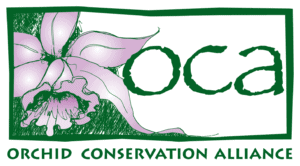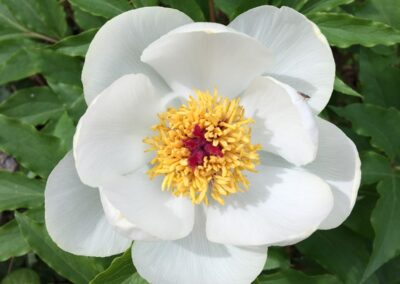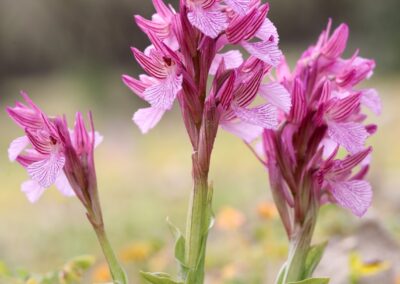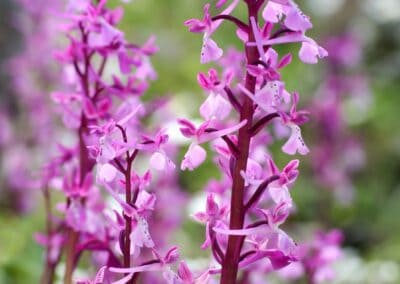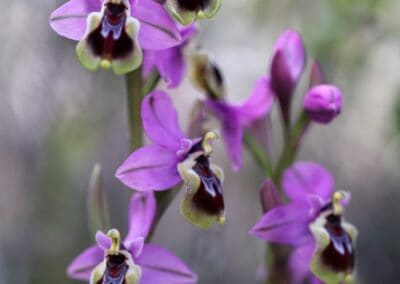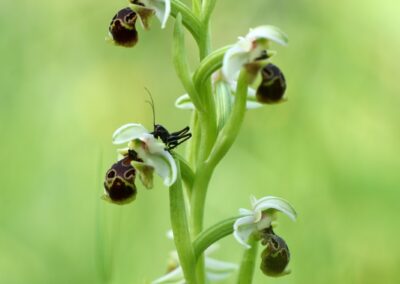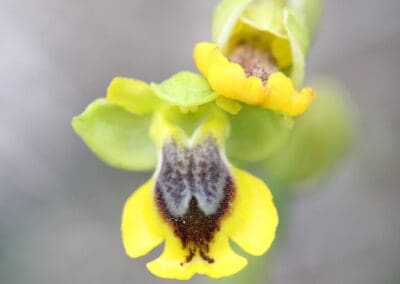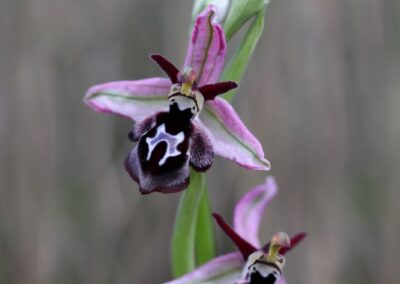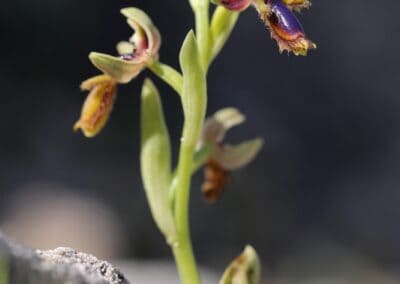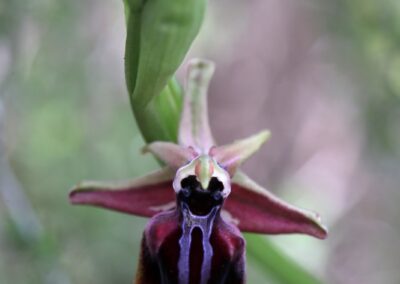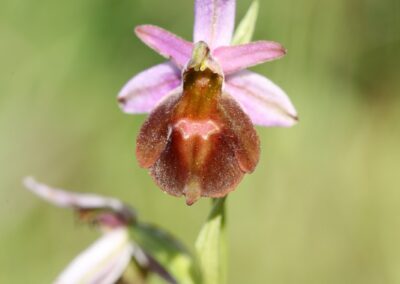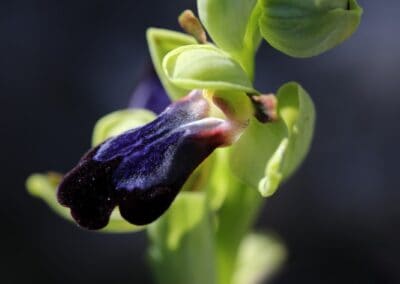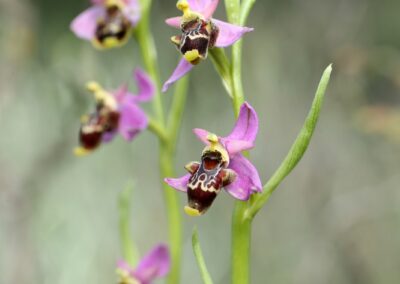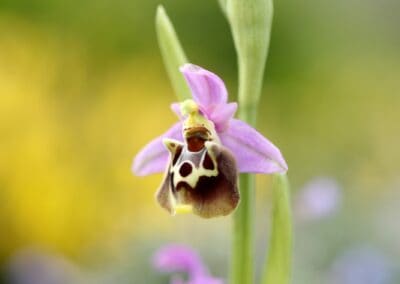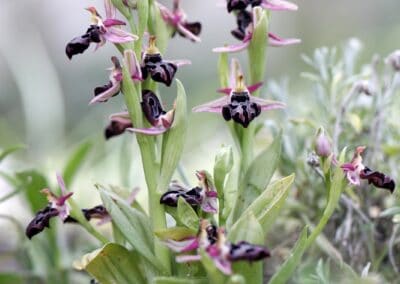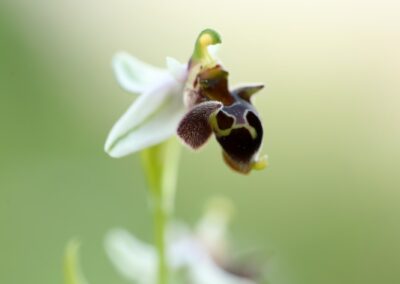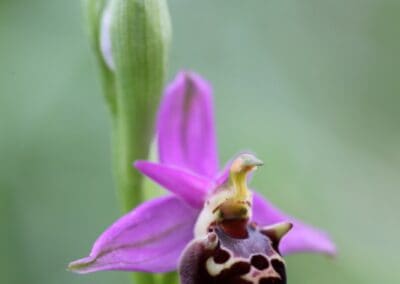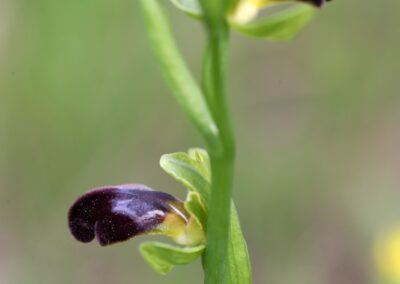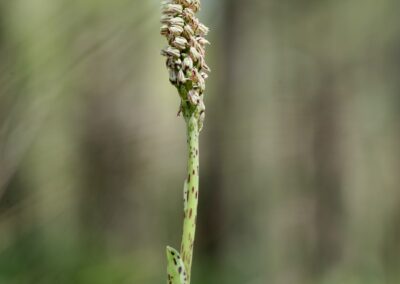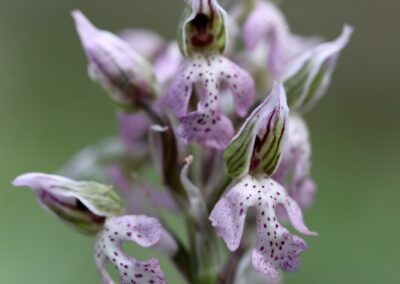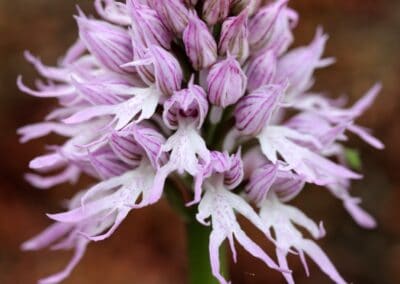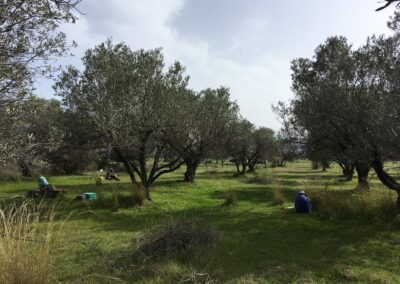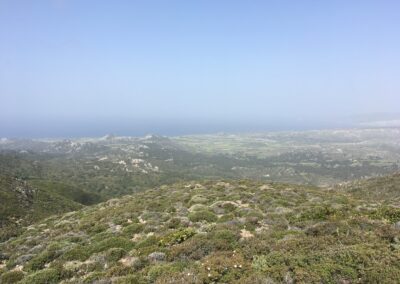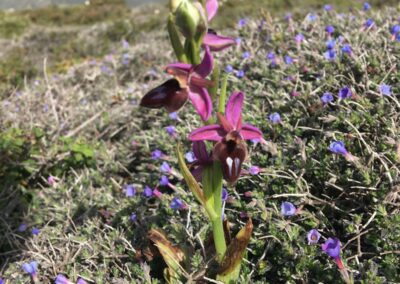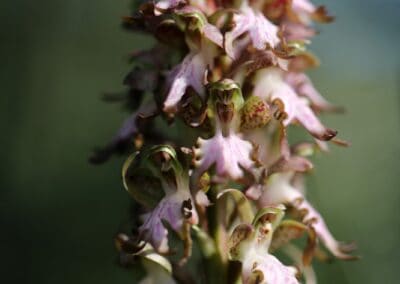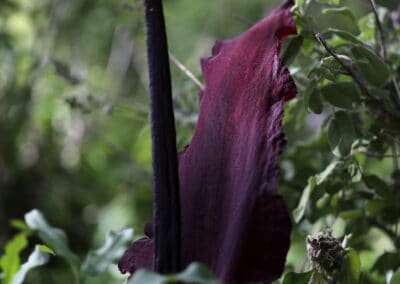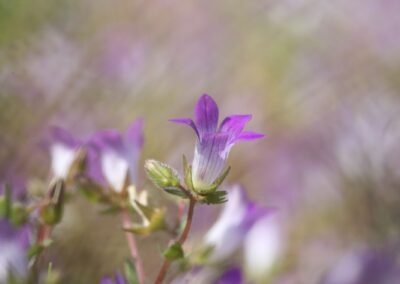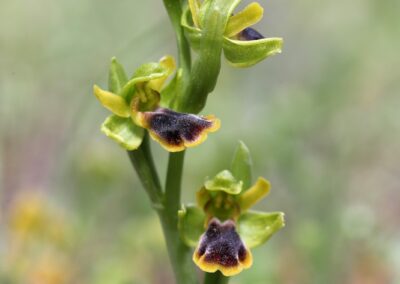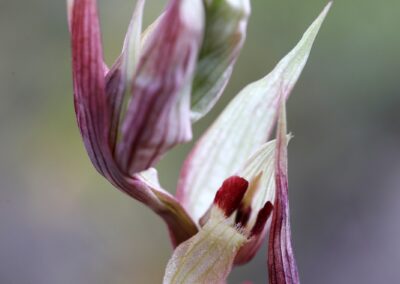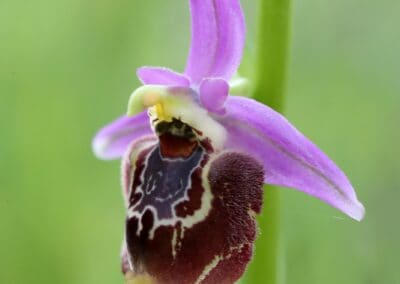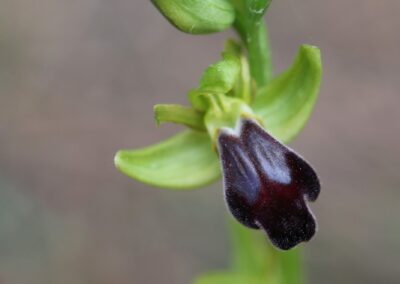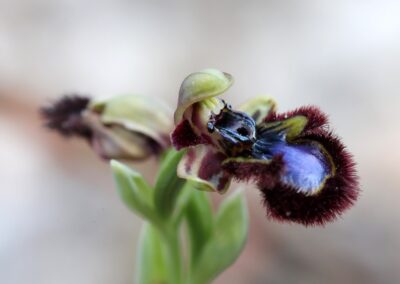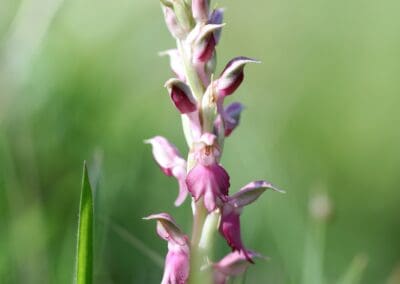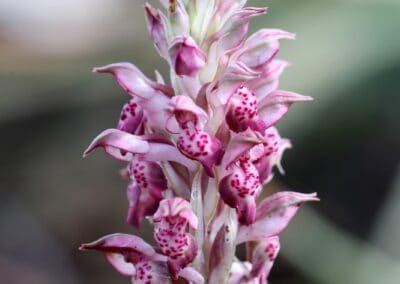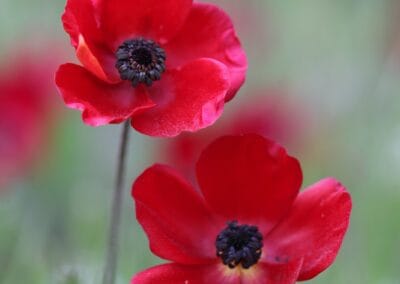Orchids of Rhodes
How better to break the chilly monotony of a long northern hemisphere winter than to journey to a sun-drenched Greek island? Springtime comes early to Rhodes, the capital of the Dodecanese Islands of the south-eastern Aegean, and the island comes alive with an abundance of wildflowers. Everywhere we go will be bathed in vibrant color, and foremost amongst this cornucopia of flowers will be the orchids. Rhodes is the perfect island upon which to indulge in an all out orchid-hunt! Home to some 50 species of orchids, we will hope to find in excess of 40 of those in the space of our 10 days exploring the island. Our tour here is timed to coincide with the ‘Goldilocks’ moment in their flowering period–the moment when most species burst into flower, but with the chance of adding late-flowering examples of the earliest species like Fan-lipped Orchid Anacamptis collina, and early-flowering examples of the species that usually flower later in the spring, like Violet Limodore Limodorum abortivum and uncommon, subtle Serapias politsii tongue-orchids.
Dates & Prices
Dates: March 30-April 6, 2025
Price: $4150 per person. Single Supplement $500 (total $4650)
Deposit: $1000. Due no later than December 1, 2024
Group Size: Minimum of 4 Maximum of 10
Final Payment Due: February 1, 2025
Deposit details: Refundable up Dec 1, 2024. Since there is a limited number of spaces, interested participants should send their deposits to the OCA as soon as possible to reserve a spot on the tour. Your spot on the tour is only reserved when your deposit is received, and the order of the deposits determines acceptance
Price Includes: hotel and all food, ground transportation, entry fees to heritage sites etc, services of guides. Costs do not include: International flights, alcoholic beverages, tips
Conservation donation: A donation based on the profit (~$1000 per person) from the tour is donated to the Orchid Conservation Alliance. The Orchid Conservation Alliance is a 501(c)3 organization, and for USA residents, the donation may be tax deductible. A formal acknowledgement letter with the exact amount donated is sent to each participant at year end.
Degree of difficulty: Mild to moderate, some short hikes. Participants should be able to walk up and down uneven ground (hillsides, rocky fields); no strenuous treks are planned although you may spend a good part of the day walking through the fields etc.
Day 1: Meet at Rhodes airport and transfer to our hotel on the gentle slopes of Mount Attaviros. After we’re checked in, and have enjoyed lunch, we’ll set out on foot to explore the orchid-rich countryside on our very doorstep.
Day 2: Mount Attaviros. There is a road that wends its way up the highest mountain on the island, which makes our life easy today – we will gradually work our way up the mountain, using our vehicles to gain altitude, and exploring different elevations on foot as we go. Targets include: Ophrys reinholdii, Ophrys dodekanensis, Ophrys omegaifera, Orchis anatolica, Ophrys ferrum-equinuum and Ophrys candica.
Day 3: Kameiros & Kritinia. We will spend the morning at the extensive and well-preserved ruins of the ancient city of Kameiros. Orchid hunters note, there are several species of Ophrys to be looked for here too! In the afternoon we will wander some of the nearby trackways that intersect the surrounding countryside, breaking some new orchid hunting ground, and bringing us in the later afternoon to the imposing later era acropolis of Kritinia, which we will also pay a visit to.
Day 4: Southern Rhodes coastal sites. Today we’ll explore various habitats in the south of the island, including phrygana and sandy substrates. Targets: Oprhys regis-fernandii, Ophrys cretica ssp. beloniae, Ophrys parvula, Ophrys iricolor, Serapias carica, Ophrys halia and Ophrys cornutula. We will also encounter our first endemic Fritillaria rhodia and Campanula rhodensis.
Day 5: Windmill hill. Today takes up another mountain, again with easy road access that allows us to explore habitat that would otherwise require hours of arduous trekking. Instead we will drive straight to the heart of an orchid wonderland, which we can then explore on foot. Targets: Ophrys tenthredinifera, Ophrys phryganae, Ophrys bombyliflora, Ophrys oreas, Ophrys sitiaca, Ophrys ferrum-equinum, Orchis anatolica, Orchis provincialis, and Anacamptis papilionacea. We will also make a stop en route to check a site for Ophrys speculum, and the possibility of early examples of Anacamptis sancta, and late examples of Anacamptis collina.
Day 6: Lindos. In the morning we will visit the achingly beautiful white-washed coastal town of Lindos and, making our way through the polished cobbled streets, climb up to the acropolis that guarded the ancient town, and provided a place of worship too. Here we will also find a bustling colony of Lesser Kestrels Falco naumanni. In the afternoon, we will focus on exploring nearby olive groves both ancient and more recent, and the orchid flora they support. Targets: Ophrys colossaea, Ophrys rhodia, Ophrys calypso, Ophrys polyxo, Ophrys blitopertha, Ophrys attaviria, Serapias bergonii and Serapias carica.
Day 7: Profitis Ilias. Another mountain, a well-forested one with a network of small roads and footpaths that make its exploration a pleasure. The ground beneath the trees, and the numerous
rocky outcrops, support a new plethora of orchid species. Targets: Orchis lactea, Ophrys cinereophila, Ophrys persephone, Ophrys lucis, Neotinea maculata, Anacamptis picta. Here we may also find Eastern Festoon on the wing, and abundant anemone and cyclamen flowers carpeting the forest floor.
Day 8: The Medieval Town of Rhodes, UNESCO World Heritage Site. This morning takes up to Rhodes Town itself, where we will enjoy a guided tour of the charming town and a journey back into its colourful history. After lunch, we take a meandering rural route back to Mount Attaviros, stopping at several woodland sites that boast thriving colonies of Ophrys lucis, Ophrys tenthredinifera, Ophrys oreas, Ophrys dodecanensis, Naked Man Orchid Orchis italica, and also Dragon Arum and Rhodes Peony.
Day 9: River Gadouras area. The countryside around the flanks of the Gadouras hides some marvellous orchid species, and we’ll be looking for treasure here. Targets: Limodorum abortivum, including the scarce pink var. rubrum; Orchis italica, Ophrys cornutula, Ophrys persephone, Anacamptis laxiflora, Serapias bergonii, and Neotinea maculata.
Day 10: Democracy Day. Greece was the cradle of democracy, and we firmly believe it’s a principle that lends itself well to our final full day in Rhodes! We will put the day to good use, returning in the morning to check on any species that may still not have been quite at their peak of flowering when we saw them last, and choosing one favourite location, decided by the group over dinner and a glass of wine the prior evening, for an unforgettable afternoon orchid finale.
Day 11: Depart Mt.Attaviros, and transfer to Rhodes airport. If time permits, we’ll stop en route to visit a good orchid site or two.
Detailed Holiday Information
How better to break the chilly monotony of a long northern hemisphere winter than to journey to a sun-drenched Greek island? Springtime comes early to Rhodes, the capital of the Dodecanese Islands of the south-eastern Aegean, and the island comes alive with an abundance of wildflowers. Everywhere we go will be bathed with vibrant colour, and foremost amongst this cornucopia of flowers will be the orchids.
Rhodes is the perfect island upon which to indulge in an unashamed orchid-hunt. Home to some 50 species of orchid, we will hope to find in excess of 40 of those in the space of our 10 days exploring the island. Our tour here is timed to coincide with the ‘Goldilocks’ moment in their flowering period – the moment when most species burst into flower, but with the chance of adding late-flowering examples of the earliest species like Fan-lipped Orchid Anacamptis collina, and early-flowering examples of the species that usually flower later in the spring, like Violet Limodore Limodorum abortivum and uncommon, subtle Serapias politsii tongue-orchids.
After years of exploring the island, our knowledge of its orchid hot-spots is intimate, and unparalleled – to the point where we know some special orchids as individuals. This means that, in addition to the wide range of species we’ll see during our stay, we will also be sharing with our guests some exquisite orchid hybrids and colour varieties that we’ve located on recent tours.
The jewels in Rhodes’ orchid crown have to be the Ophrys bee orchids, and we’ll see many examples of their varied kind, including sought-after species such as Ophrys colossaea, Ophrys regis-ferdinandii, Ophrys reinholdii, Ophrys cretica ssp. beloniae, Ophrys rhodia, Ophrys attaviria, Ophrys persephone, Ophrys lucis, Ophrys oreas, and more besides. Many of their scientific names feature in the geography, history and mythology of the region, a heritage as colourful as the flowers themselves.
Our base for the tour is at a friendly, family-run small hotel in the center of the island, in a traditional village nestling on the lower flanks of Mount Attavyros, the island’s highest mountain. Here we will find myriad orchids within a couple of minutes’ walk of our hotel, growing on the terraces of ancient olive groves. Most importantly, we will be well-fed by Mama’s wonderful Greek cookery, and Papa’s skills with the wood-fired grill. The breakfasts alone are a feast… and the evening meals, after a day packed with orchids, are a delight. Your guides have been staying here annually for years, and as a result we are all treated like family. It’s a joy to return there in the late afternoon for a drink in front of the fire in the cosy bar, and a chance to compare notes from the day’s orchid-hunting before dinner.
The hotel’s location means that we are ideally placed to explore the island, with nowhere much more than an hour’s drive away from our base. The roads are all of good quality, and very quiet – indeed, many orchids thrive on the roadside verges and banks, so we may have to make the occasional pit-stop to enjoy those too – these spontaneous roadside stops at promising locations can be extremely rewarding, like the occasion when we found a totally unexpected Ophrys basilissa amongst hordes of Ophrys ferrum-equinum!
The island, whilst compact, supports a good range of habitats, ranging from olive groves to dry phrygana, and forested mountainsides to coastal river valleys. Access to the sites we visit is easy, and the pace of each day will be relaxed and easy-going. Make sure you bring plenty of memory cards for your camera, as the opportunities for orchid photography are endless
We won’t neglect the other wildflowers we encounter, and look forward to sharing some of the island’s particular botanical highlights. We’ll encounter the foul-smelling magnificence of towering Dragon Arums Dranunculus vulgaris, and the sweetly-perfumed Rhodes Peony Paeonia clusii ssp. rhodia. We’ll admire the delicacy of buttery yellow Rhodes Fritillaries Fritillaria rhodia, mauve Small Rhodian Bellflowers Campanula rhodensis, icy-white Rhodes Cyclamen Cyclamen rhodium, and many more besides. We may, however, get distracted by Eastern Festoon Zerynthia cerisy and Eastern Dappled White Euchloe ausonia butterflies, Karpathos Frogs Rana cerigensis, or the snake-passing courtship display flights of Short-toed Eagles Circaetus gallicus, to name but a few non-flowering highlights.
Having 10 days at our disposal means we’re able to take our time and not adopt a hectic pace – we’ll spend time in our favorite and historically most fruitful orchid sites, and we’ll explore some new promising sites too. Speaking of history, we will also ensure that we immerse ourselves in the fabulous cultural heritage of this remarkable island. For centuries Rhodes was the capital of the Dodecanese islands in the eastern Mediterranean, and the imprint of history remains magnificently preserved on the island.
Scattered amongst our days with the orchids we will have 3 half days where we will explore the historical aspect of the island – visiting the UNESCO World Heritage Site of Rhodes Town itself, the ancient ruined city of Kameiros, and the achingly beautiful white-washed town of Lindos, surmounted by the imposing acropolis. For these half days we will be accompanied by Rhodes native and historian Nektaria – Nektaria speaks beautiful English, and her in-depth knowledge of local history greatly enhances our visit to her island home.
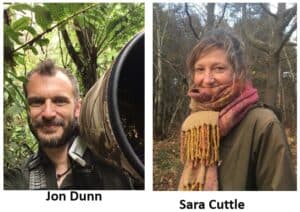
Our tour guides from Mariposa Nature Tours
Your guides for the 10 day tour will be naturalist and European orchid expert Jon Dunn, author of botanical bestseller Orchid Summer; and Sarah Cuttle, professional plant photographer for, amongst others, the Royal Horticultural Society. Jon has been a professional wildlife tour leader for 15 years now, and loves sharing orchids in particular with his guests. Sarah, also a naturalist in her own right, is always really happy to help guests to get the very best images of the wildflowers we find, whether that’s using a fancy DSLR or mirrorless camera, or the camera in a phone.
In summary, this is Jon’s favorite of all the botanical tours he leads in Europe, and for good reason – there’s so much to see here at this wonderful time of year, the food is wonderful, and the climate is as warm and inviting as the local welcome. We can’t wait to share it all with you.
